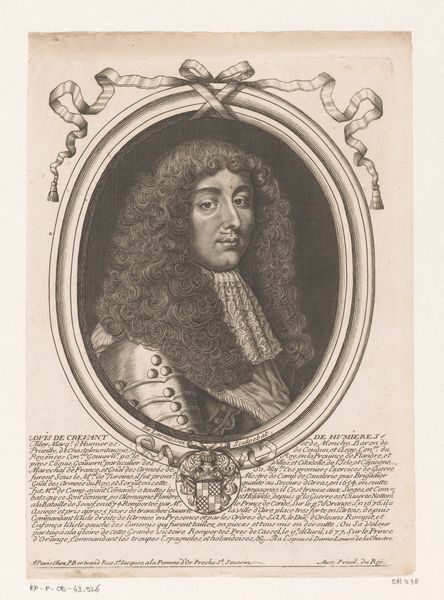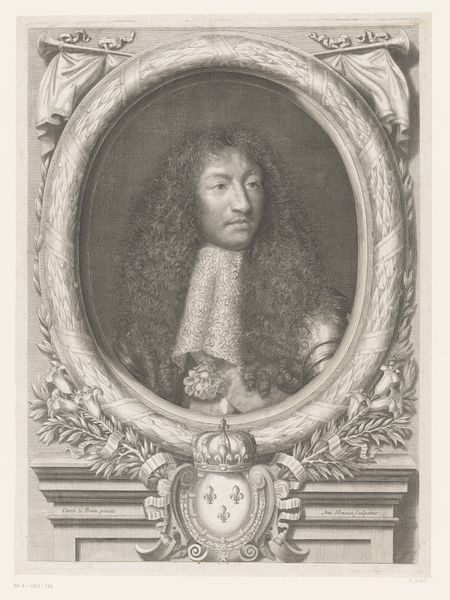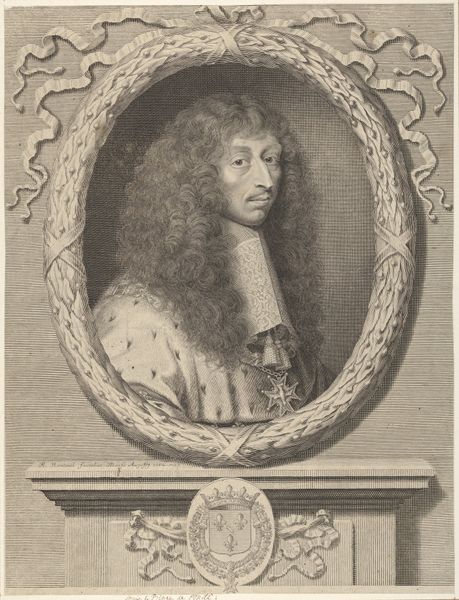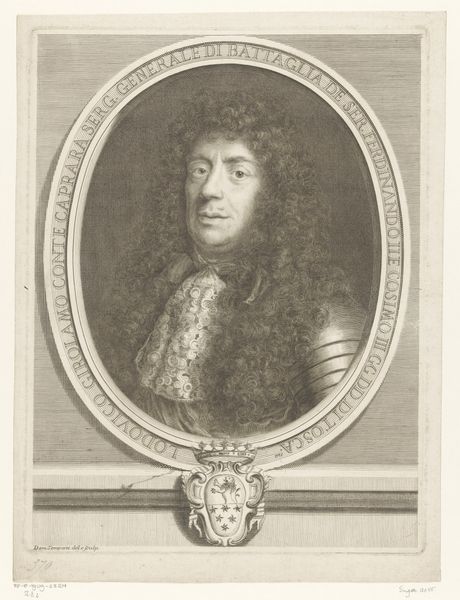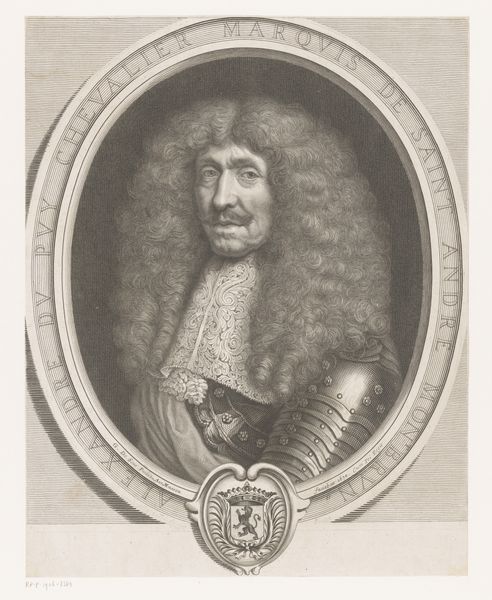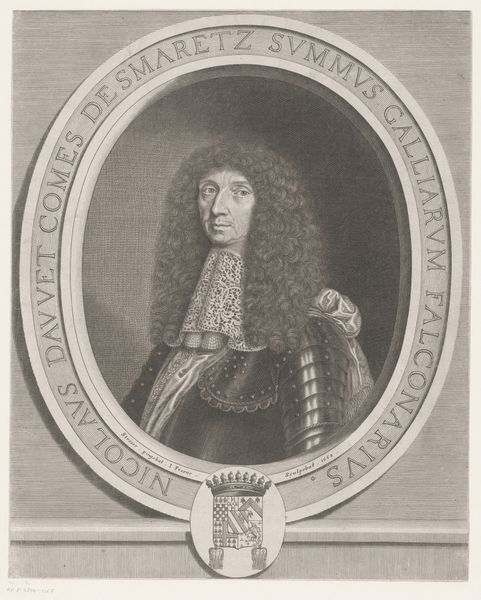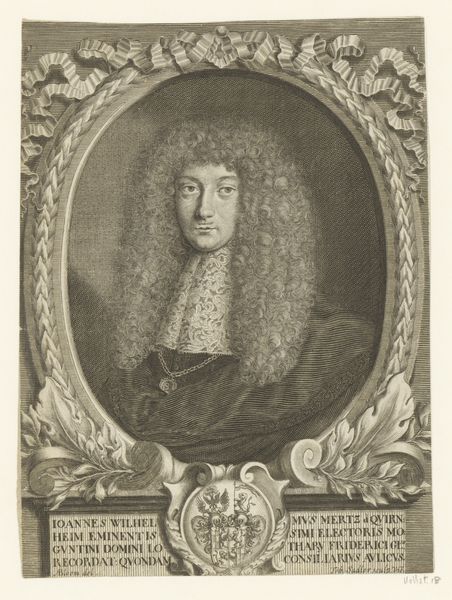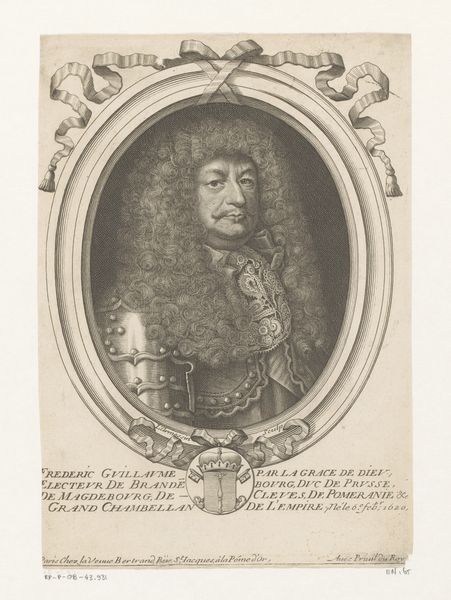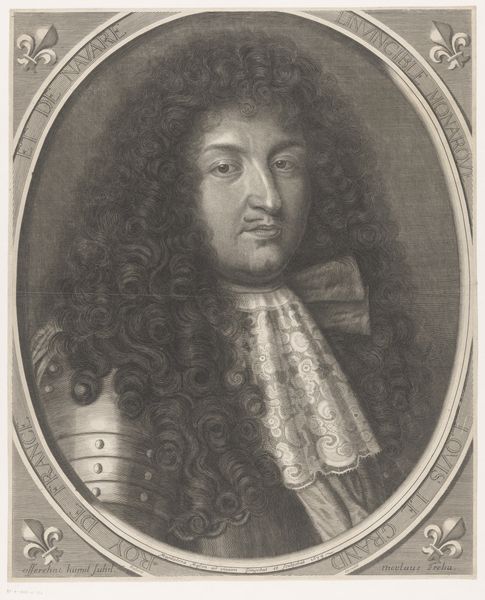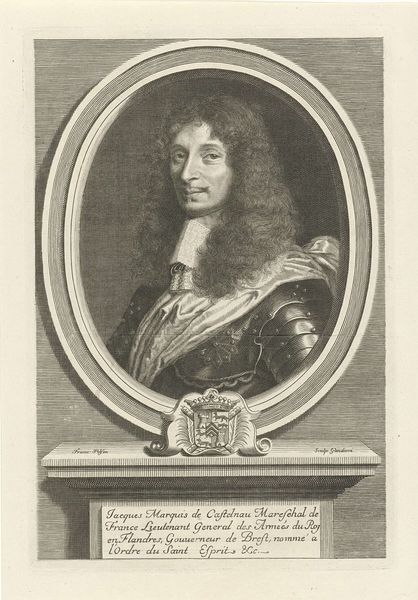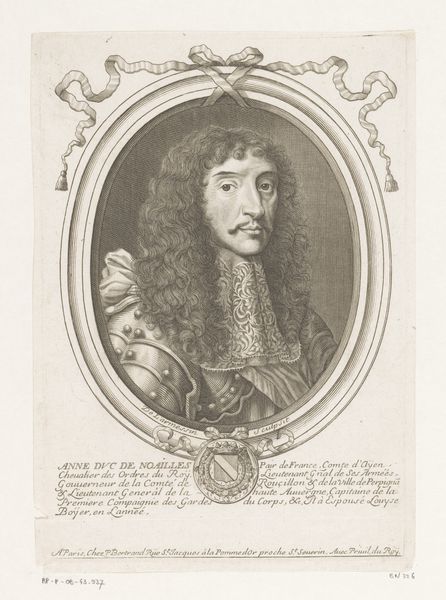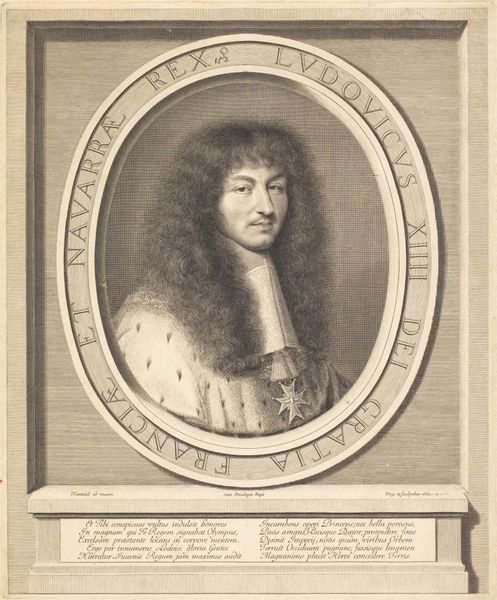
engraving
#
portrait
#
baroque
#
history-painting
#
engraving
Dimensions: height 249 mm, width 193 mm
Copyright: Rijks Museum: Open Domain
Editor: This is a portrait of Louis II de Bourbon, engraved by Jacques Lubin around 1696-1700, and it's at the Rijksmuseum. The detail is just amazing! The sitter seems very self-aware, almost burdened by something. What visual cues jump out at you when you look at it? Curator: Well, first, notice how Lubin captures the sitter not just as an individual, but as an embodiment of power. The fleur-de-lis coat of arms is obviously significant. Beyond lineage, it’s a potent symbol tied to centuries of French monarchy, signaling divine right and national identity. That specific crown signifies authority but can also become a signifier for repression depending on who's interpreting it and from what vantage. Editor: Interesting! So, a symbol's meaning isn't fixed. What about the oval frame itself? Does that add anything? Curator: Absolutely! The oval—think of a Roman cameo, right?—places the image within a tradition of honouring powerful figures. But notice its limits: The sharp delineation contains the overflow of the Duke's long curls. His wild hair resists being tamed and framed, suggesting inner tensions perhaps. It introduces a play between control and the wild undercurrents of personality, don't you think? Editor: I do see that now! It's like the portrait hints at complexities that the formal setting tries to contain. Looking at it this way reveals much more about the artwork and its place in cultural history. Thank you! Curator: Exactly. And by recognizing these historical and psychological depths in such a "simple" portrait, we become better interpreters of both art and culture itself.
Comments
No comments
Be the first to comment and join the conversation on the ultimate creative platform.
